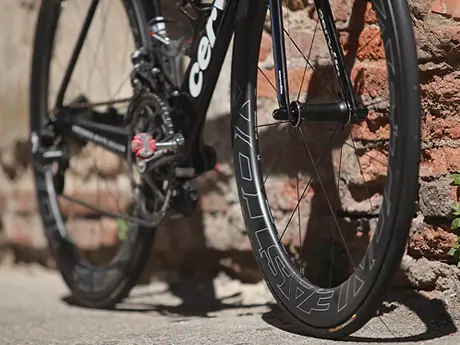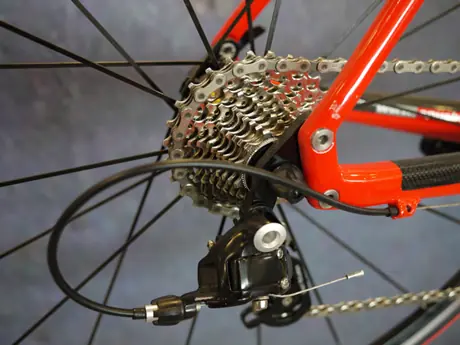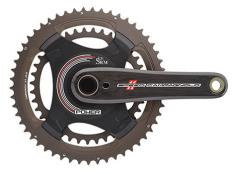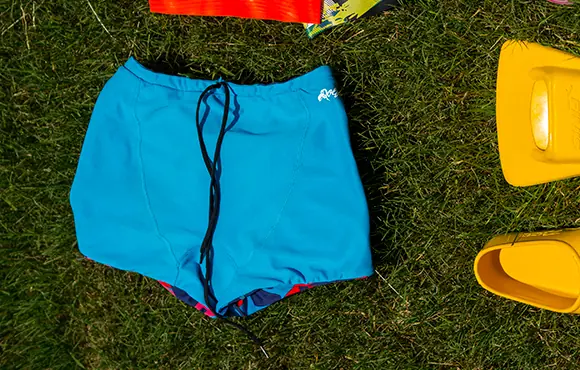Wetsuits
1 of 13
Photo courtesy of CreativeCommons
According to an expert at wetsuit manufacturer ROKA, wetsuits should last about four years with proper care. Triathlon wetsuits can age and crack if exposed to excessive sunlight, so keep them well protected when not in use. Worn and aging wetsuits may not be as form-fitting and gap at the neck, wrists and leg cuffs.
Pro Tip: To extend the life of your wetsuit, wash it in cold tap water and dry thoroughly before storing.
Find:
Your Next TriathlonSwimsuits
2 of 13
Photo/Hypnotica Studios, CreativeCommons
We've all see that person with the rather thin seat of their swimsuit. U.S. Masters Swimming Level 4 Coach and former ITU pro triathlete, Laurie Hug, swaps her suits out as soon as they start getting too stretchy in the straps or saggy in the belly or butt.
Pro Tip: Hug suggests that worn-out swimsuits can be used as "drag suits"—worn on top of newer, form-fitting ones—to extend their usable life while also adding some resistance to your swim workout.
Find:
Your Next TriathlonBike Tires
3 of 13
Photo/Greg Kaplan
Alex Applegate of Bontrager, Trek's in-house component brand, says to look at the shape of your bike tire tread where it contacts the road: A square shape means it's time to replace your tires. Some tire brands have little dimples in the tread, which function as wear indicators. Keep an eye on these. When the dimples get shallow, replace your tires.
Find:
Your Next TriathlonBike Brake Pads
4 of 13
Photo/Greg Kaplan
When the siping, or vertical grooves in brake pad, are flush with the body of the brake pad, it's well-past time to replace your pads. "Once you wear that far into the brake pad, contact will be slightly angled in relation to the rim braking surface," says Applegate. "You will get better performance out of a square contact, and you won't risk the brake pad carrier contacting the rim due to the angle."
Find:
Your Next TriathlonBike Drivetrain
5 of 13
Photo/Andrew Dressel
When shifting gears on your bike becomes sloppy or sluggish—and you're sure your derailleurs are tuned correctly—or when you try to make a shift and the chain rattles and takes a few pedal revolutions to move into the desired gear, consider replacing the chain and cassette. It's common practice to swap these two drivetrain components together to ensure they wear uniformly and work well as a system. Chainrings are shifted a lot less than your gears in the rear, so they need to be replaced less frequently.
Find:
Your Next TriathlonBike Shorts
6 of 13
Photo/Flowizm, Flickr
When the chamois in your bike shorts no longer offers you comfort—you shift around on your saddle or you chafe—it's time to replace your shorts. Signs of wear are a flattened chamois, panels that have lost their shape or leg bands that no longer lie flat on your leg.
Find:
Your Next TriathlonBike Helmet
7 of 13
Photo/Greg Kaplan
Simone Cordery-Cotter of Rudy Project North America suggests if you crash in a helmet, replace it, even if nothing appears wrong. She added that if your helmet is six years old or older—even if it has never seen any damage—it should be replaced to account for normal wear and tear.
Find:
Your Next TriathlonRunning Shoes
8 of 13
Photo/Greg Kaplan
Tread wear is a great indicator of when to replace running shoes; note the tread on the shoe on the left compared with the one on the right in the image above. According to a representative of Hoka One One, runners should expect to get 250 to 300 miles from their shoes. Keep in mind that heavier runners will wear down more quickly compared with lighter ones who may get more mileage from a shoe before having to replace it.
Pro Tip: You can use an online training log like Strava or Garmin Connect to track your shoe mileage.
Find:
Your Next TriathlonRunning Bra
9 of 13
Photo/WM, CreativeCommons
A perennial USA Triathlon front-of-the-pack age-group triathlete replaces her bras "as soon as they shrink or loose elasticity, and definitely when they chafe." Running bra life may depend on the material from which it's constructed: Cotton-based bras may stretch and fail to provide needed support while bras comprised of synthetic materials may shrink and become too snug.
Find:
Your Next TriathlonWater Bottles
10 of 13
Photo/Greg Kaplan
Even with routine sanitization, bottles get gross. Inspect your bottles for hydration mix buildup, especially in the valve opening. If you can't clean it, abandon it, and move to a cleaner container. Getting sick from bacteria buildup is not worth the reminder of a decade-old race printed on the side of a piece of plastic.
Find:
Your Next TriathlonBike Pump Parts
11 of 13
Photo/Greg Kaplan
How do bike mechanics keep using the same bicycle pump for decades? They replace parts as needed. Josh Poertner of Silca recommends consumers replace the seals in their pump heads about every five years and the plunger seal every 10 years. Poertner also notes that pump gauges should be replaced every three years—every five years for Silca pumps—to maintain accuracy.
Pro Tip: When shopping for a new pump, make sure you buy one that is serviceable and allows for replacing worn parts.
Find:
Your Next TriathlonHex Wrenches
12 of 13
Photo/Greg Kaplan
Some of the most commonly used bike tools are hex wrenches—specifically 4mm, 5mm and 6mm sizes. Look for worn or rounded edges on your tools, and replace as soon as they no longer easily fit in fastener heads.
Pro Tip: Consider spending a few more dollars for quality bike tools, which are made of metals that are harder than fasteners on which they are used. Expensive tools are more durable and are less likely to deform, potentially causing the bolts on your bike to "round out," compared with cheaper options.
Find:
Your Next TriathlonAbout the Author







Discuss This Article